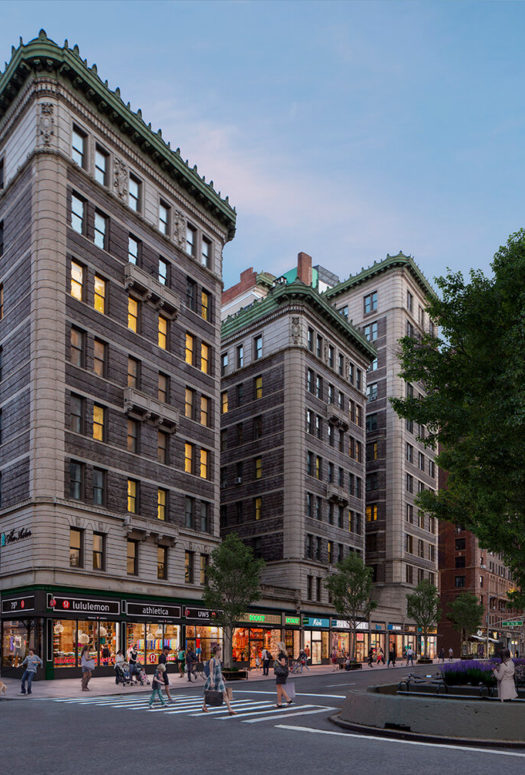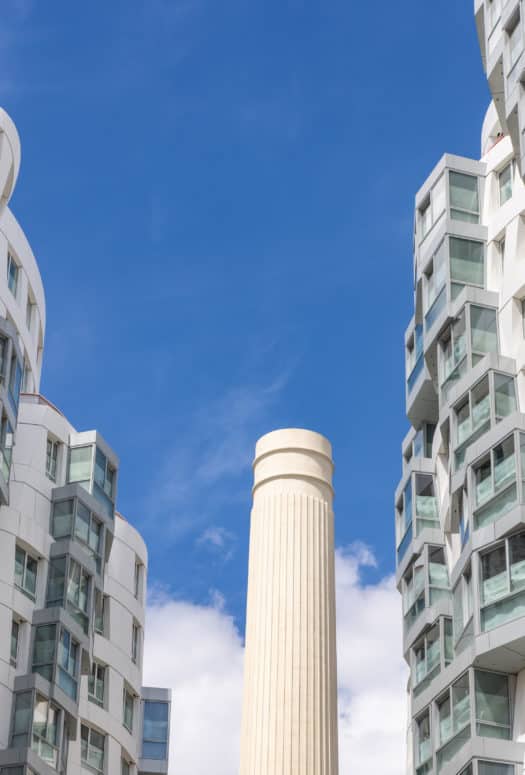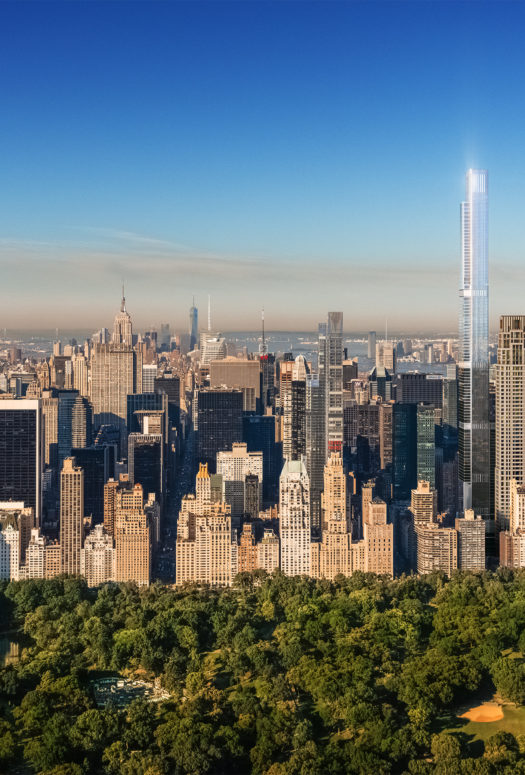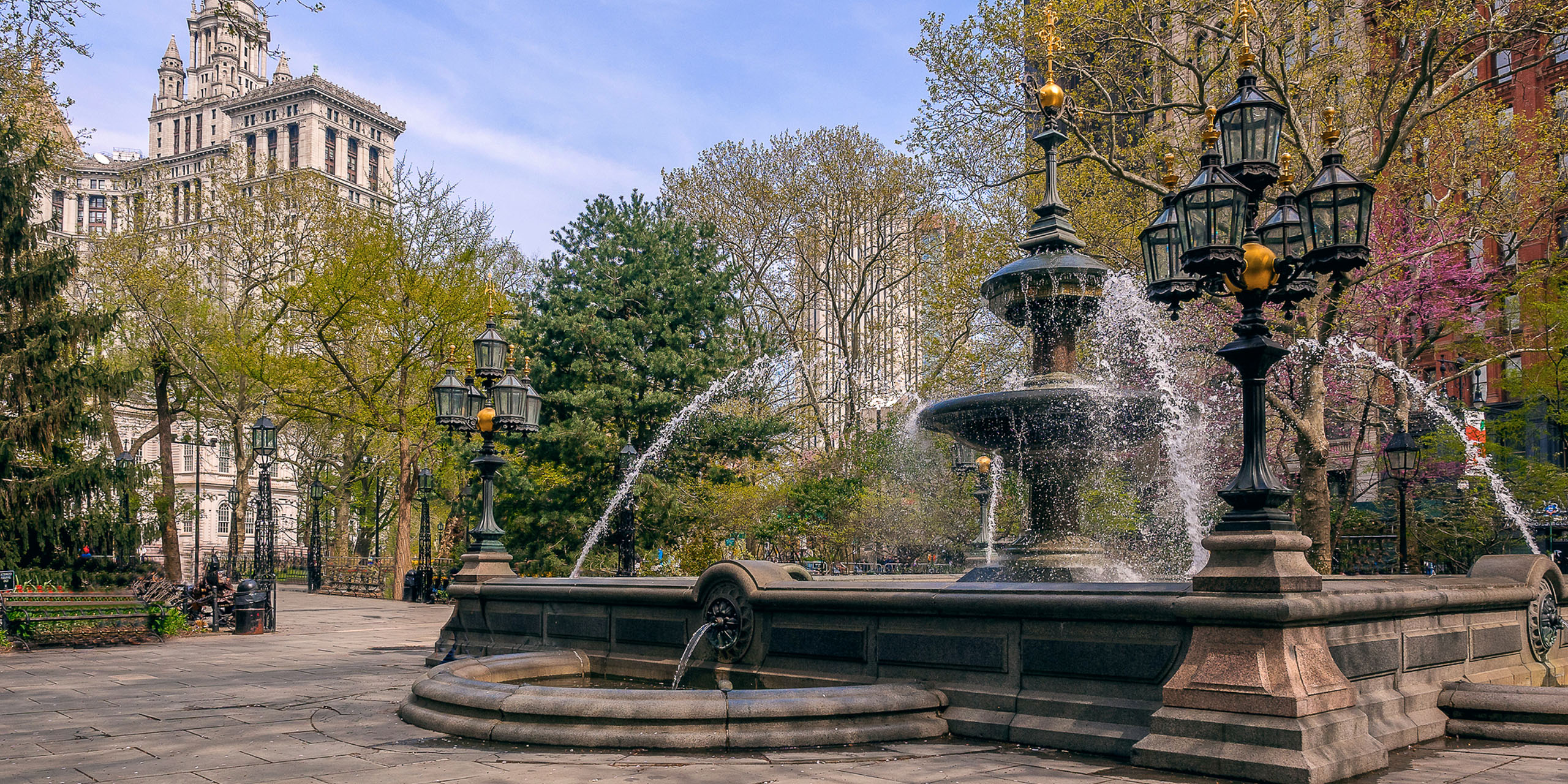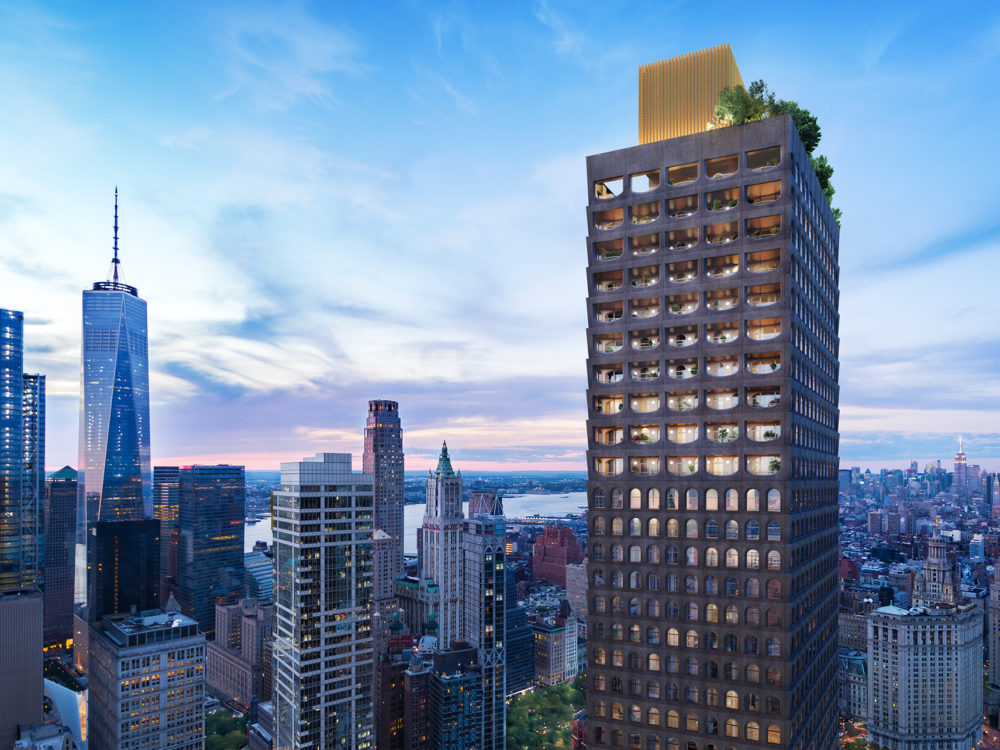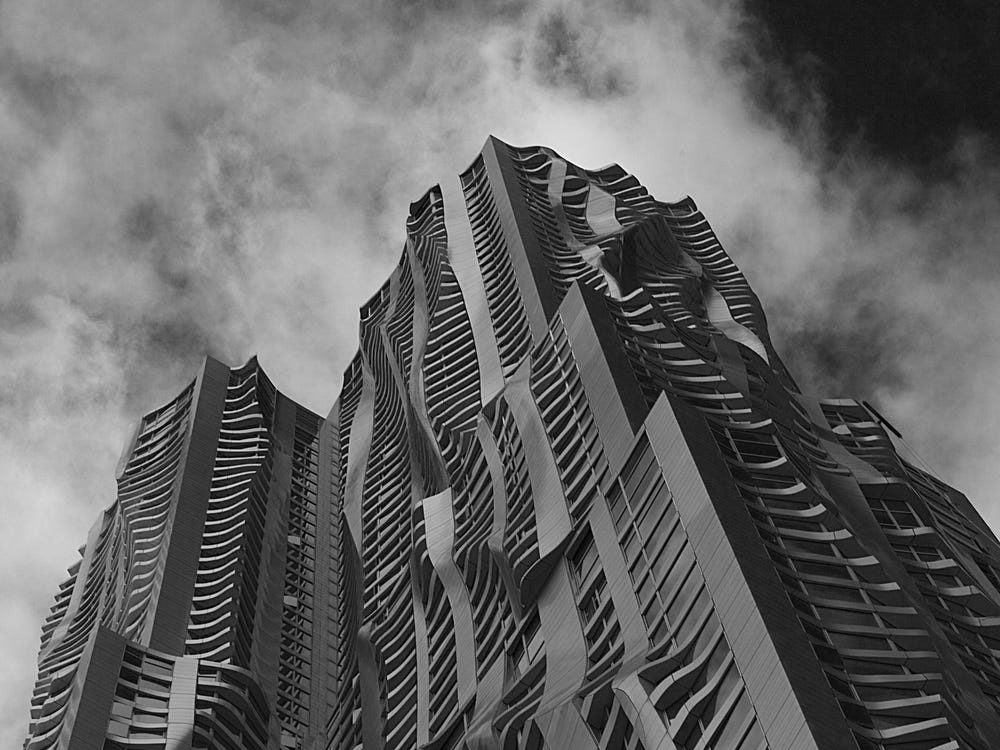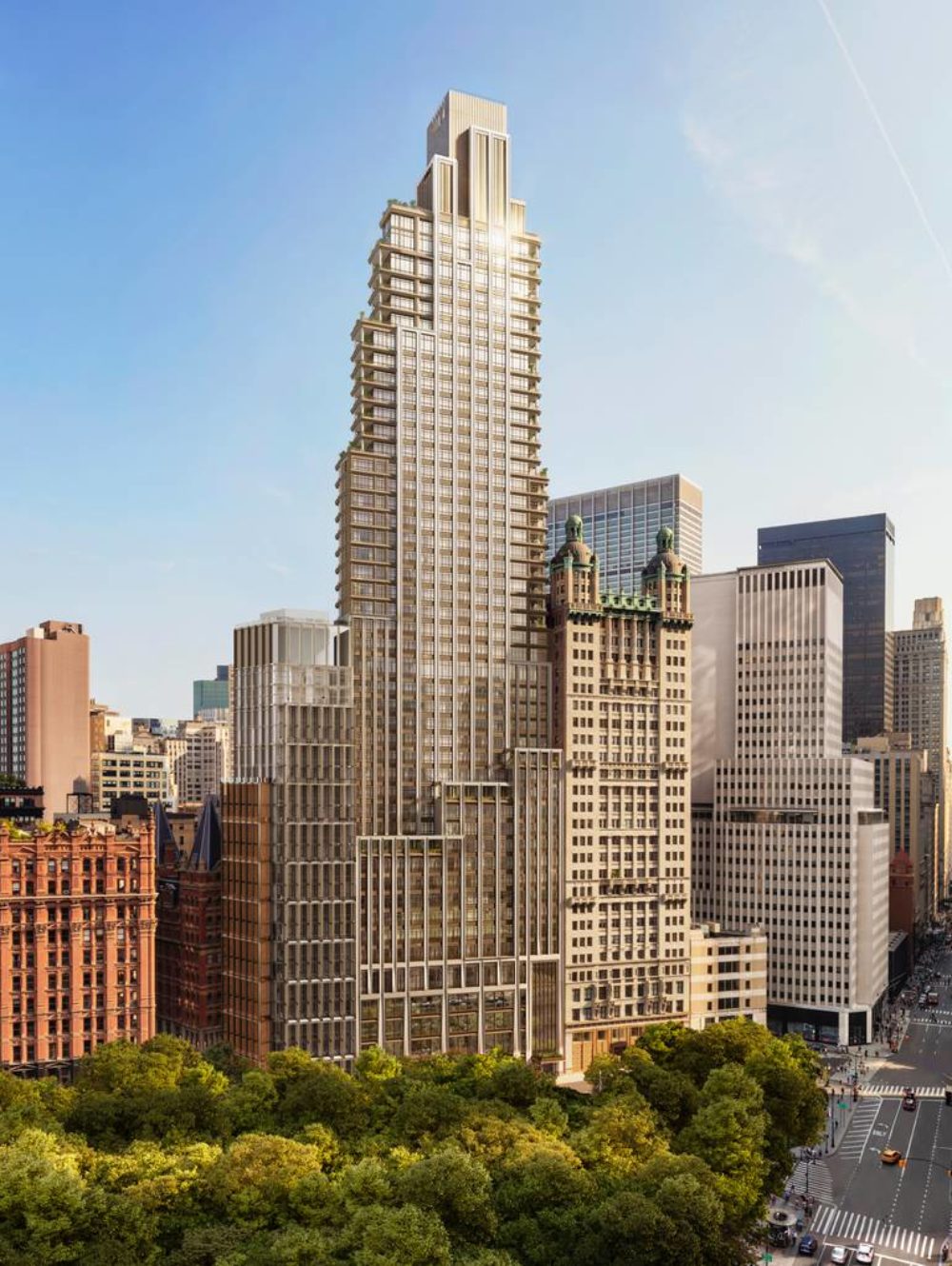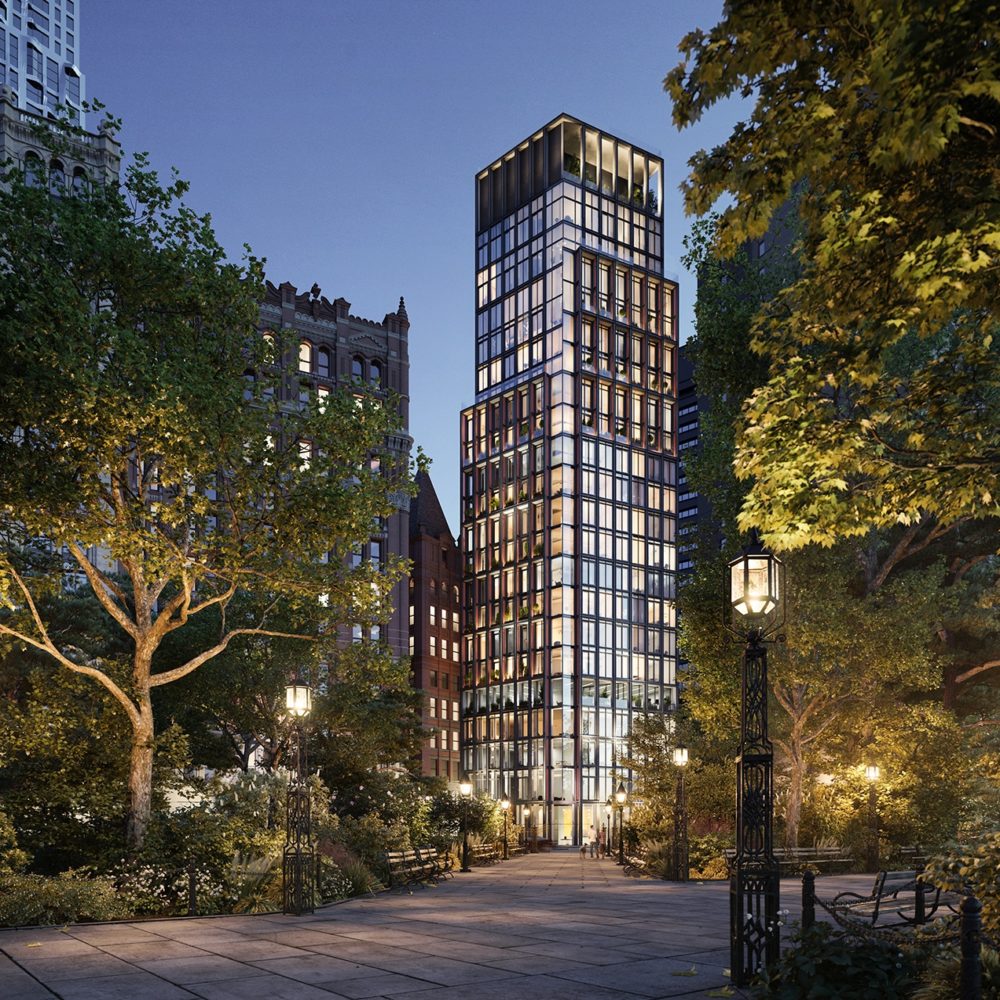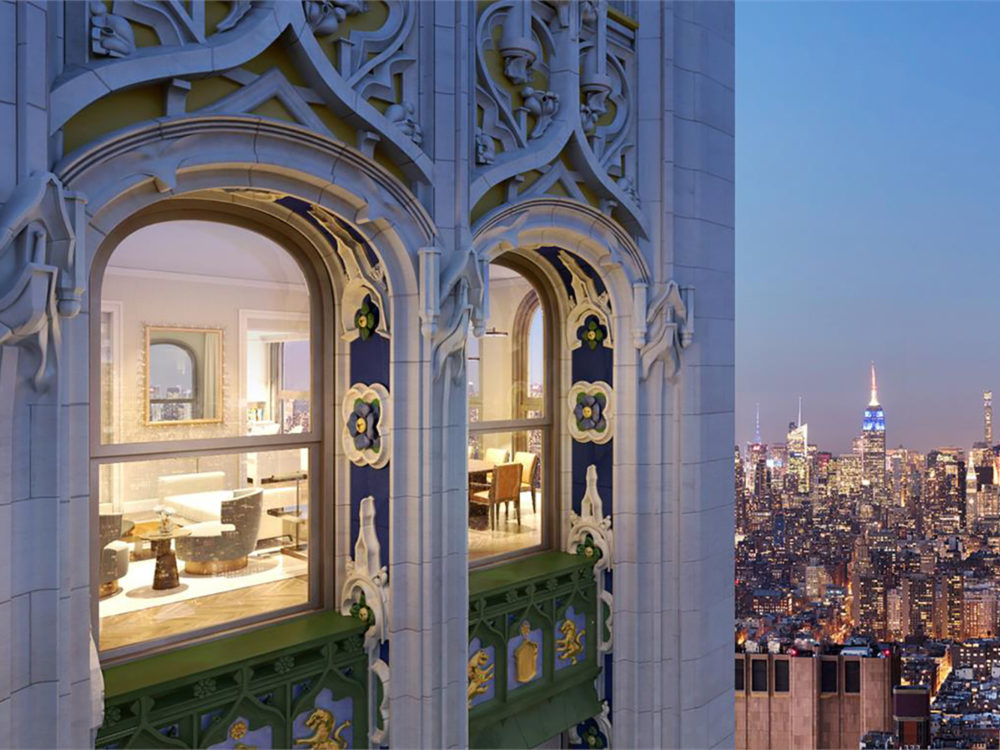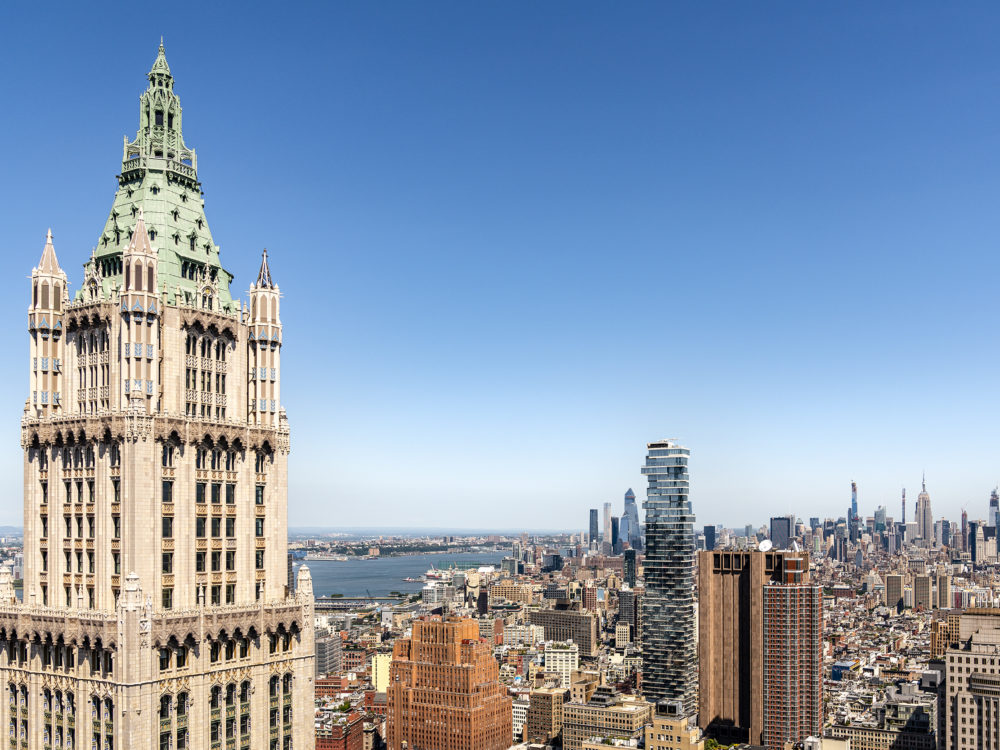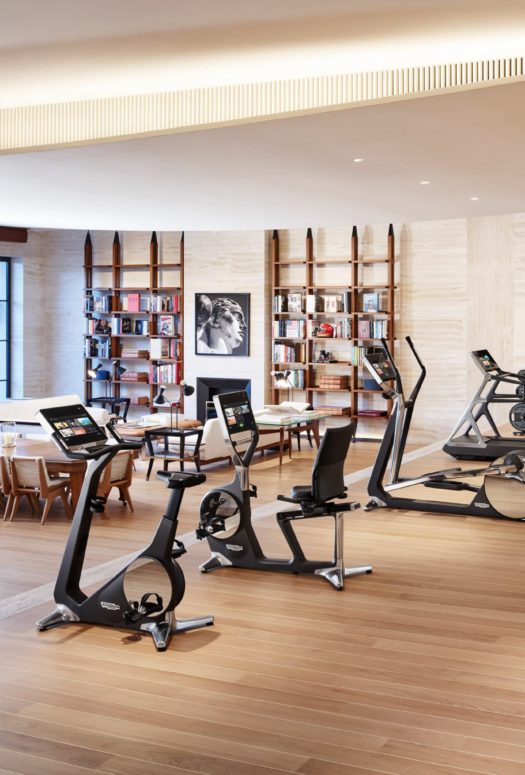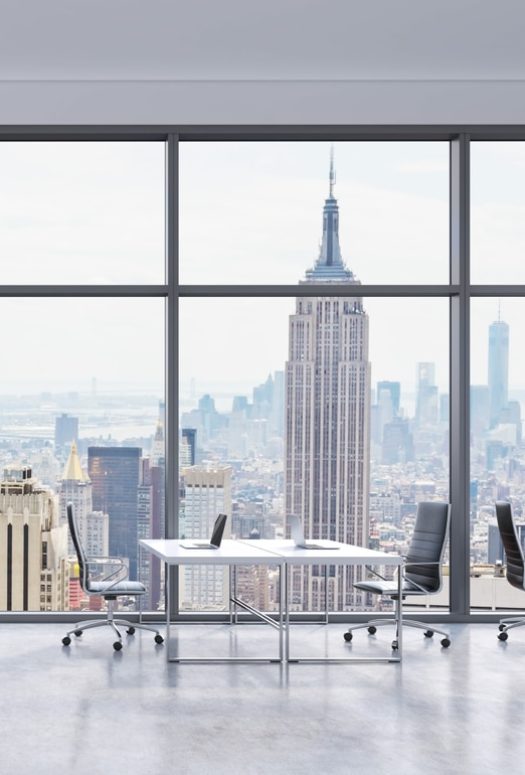Block & Lot: A Downtown Park Steeped In History
By: Elissaveta M. Brandon
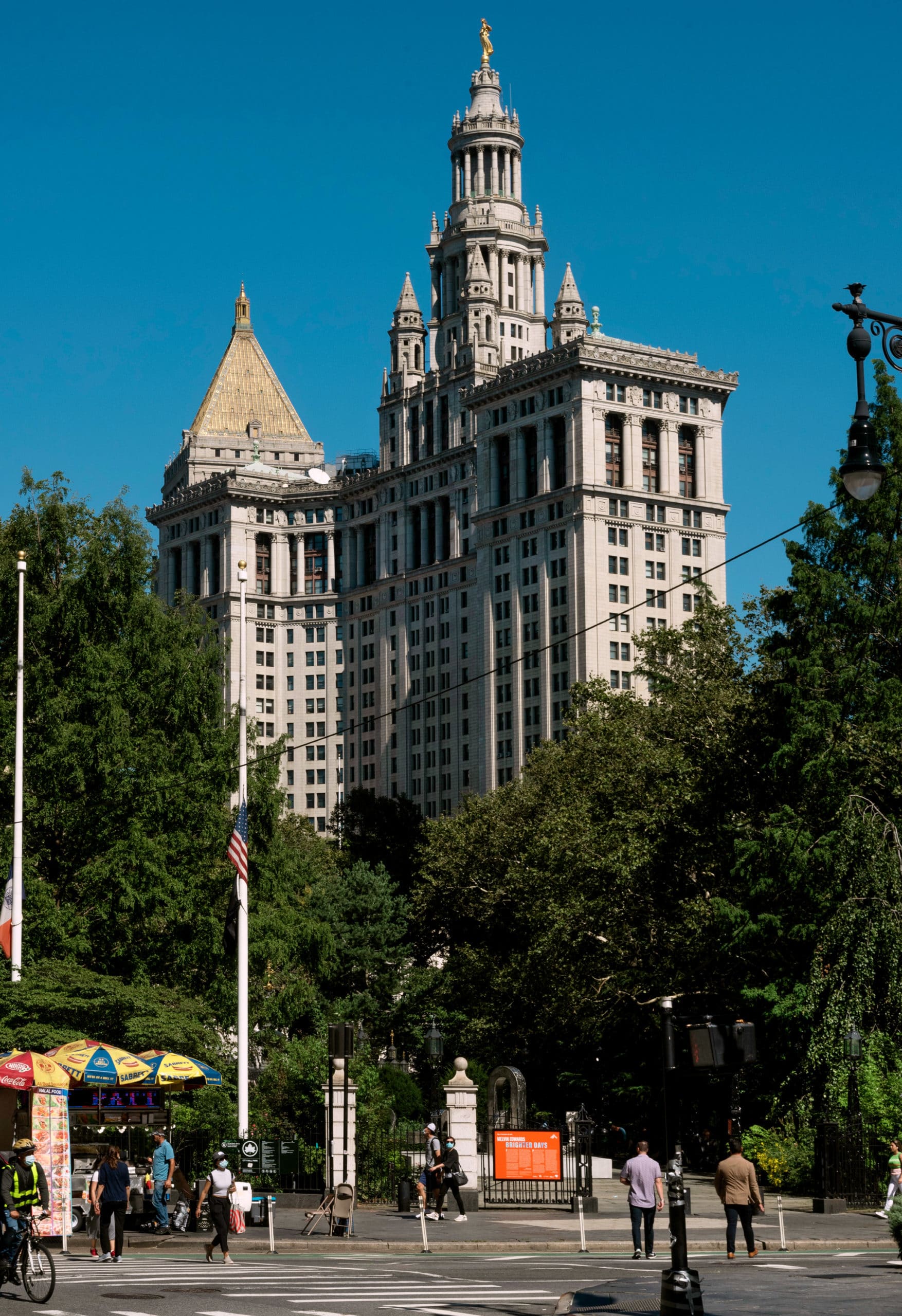
The mention of New York may not immediately invoke centuries-old history, but spend about a minute around City Hall Park in Lower Manhattan, and your perspective will soon begin to shift.
Bound by Chambers Street, Park Row, and Broadway, City Hall Park is a pocket of green rooted in the past. In this little corner of Manhattan, stately government buildings—some, like City Hall, dating as far back as 1812—rub shoulders with neogothic skyscrapers, fluted concrete towers, and glass residences. Anchored by City Hall, the park provides a welcome breathing room punctuated by an ornate Victorian fountain and a public art program that often fills the park with contemporary art sculptures.
In the early 1600s, when the park was a communal pasture ground for livestock, its western boundary was a Native American trail now known as Broadway. The land has served many functions since, including a prison, an almshouse, a parade ground, a public execution site, an art museum, and a post office.
Today, City Hall Park is known as the seat of city government: located on the northern tip of the park, the Renaissance Revival-style City Hall is the oldest in the United States to still house its original government functions. It was designed by French American architect Joseph-Francois Mangin along with American architect John McComb (who also designed Gracie Mansion, the official residence of the mayor of New York City).
When City Hall was built, from 1803 to 1812, many felt it was too far north of the center of the city. New York City, of course, was only just beginning to grow. In 1842, City Hall Park was graced with its first fountain to celebrate the completion of the Old Croton Aqueduct, which provided New York City with a steady supply of clean water. And in 1871, the Croton Fountain was replaced by the Jacob Wrey Mould Fountain, which graces the southern tip of the park to this day.
The Victorian-style fountain bears the name of its architect, whose decorative work can also be seen on Belvedere Castle, the centerpiece of Bethesda Fountain, and other 19th-century Central Park structures. Articulated around a large, square, granite basin, the fountain is adorned by four gas-lit candelabra on each corner and small semi-circular pools on each side. A granite and bronze fountain rises from the center, crowned by an ornamental finial.
City Hall Park is immersed in history: on the corner of Park Row and Frankfort Street, the former New York Times Building (now home to Pace University) dates back to 1889 and is the oldest surviving building of what was once known as Newspaper Row. But signs of modern life abound. Look up, and you will see Frank Gehry’s shapeshifting skyscraper at 8 Spruce Street. Look again, and you may catch David Adjaye’s 130 William, with its elegant arched windows.
On the southeastern edge of the park, Rogers Stirk Harbour + Partners’ 33 Park Row offers direct park views from its many loggias. Next door, COOKFOX Architects’ 25 Park Row, with its fluted concrete facade and dramatic setbacks topped with loggias, also overlooks the park.
On the southwestern side of the park, along Broadway, the unmistakable Woolworth Building provides a counterbalance to these contemporary offerings. Designed by Cass Gilbert in 1912, the 58-story skyscraper was the tallest building in the world until the title was snapped up by the Chrysler Building in 1930. In the past decade, the top half of the building’s interiors have been converted into luxury residences, with interiors by design icon Thierry Despont.
As part of the renovation, the Woolworth Building’s terra-cotta facade was meticulously restored. Today, it encapsulates the spirit of City Hall Park perfectly: a place where old and new are in constant dialogue as the city continues to reinvent itself.


